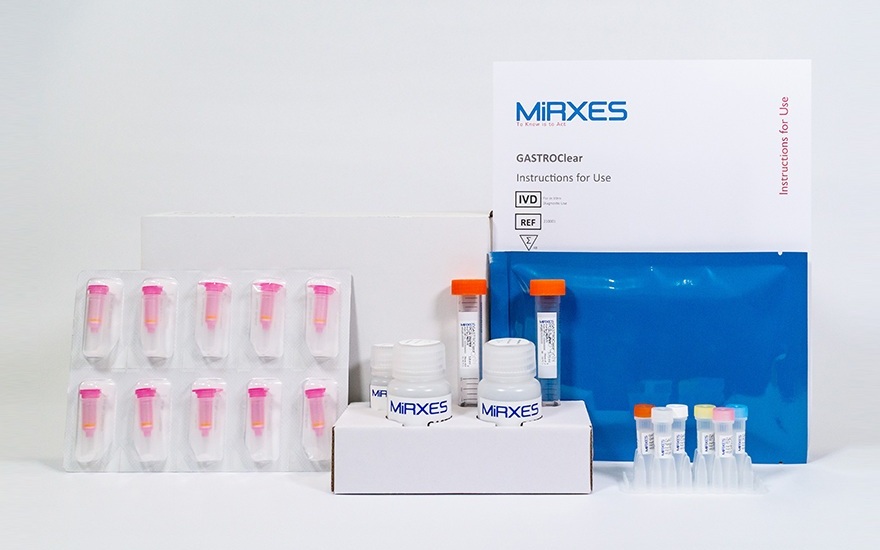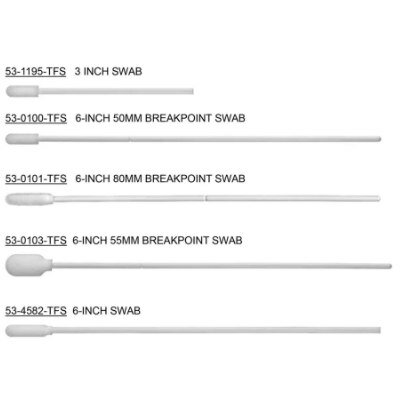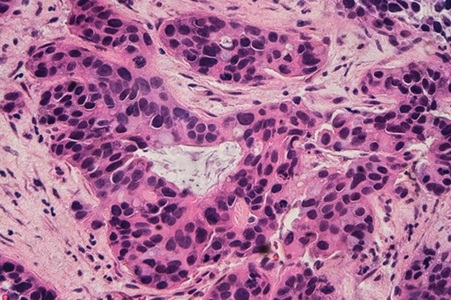Biochemical Abnormalities Among Celiac Disease Patients Referred for Antibody Testing
|
By LabMedica International staff writers Posted on 09 May 2022 |

Celiac disease (CD) is a chronic disease occurring in all age groups and affecting approximately 1% of the population, although many cases of CD remain undiagnosed. This condition is caused by an abnormal immune response in genetically susceptible individuals triggered by the ingestion of gluten proteins from wheat, rye and barley.
Celiac disease primarily affects the small intestine, often leading to malabsorption and micronutrient deficiencies. A small intestinal biopsy with recognition of villus atrophy and inflammation has been the gold standard for diagnosis; however, serological testing is increasingly used in the diagnostic process and screening for CD, mainly by the detection of CD-specific antibodies.
Clinical Scientists at the Copenhagen University Hospital (Copenhagen, Denmark) and their colleagues included in an observational cohort study 706 individuals that had received a positive CD antibody result; 72.7% were women and the mean age was 26 years. The team compared the results of those with CD-positive antibodies with individuals with CD-negative antibodies.
Tissue transglutaminase antibody (IgA) (TTG-IgA), tissue transglutaminase antibody (IgG) (TTG-IgG), deamidated gliadin peptide antibody (IgA) (DGP-IgA) and deamidated gliadin peptide antibody (IgG) (DGP-IgG) were measured in serum by fluorescence enzyme immunoassay (EIA) on the UniCAP 100 and ImmunoCAP 250 platforms (Phadia Laboratory Systems, Thermo Fisher Scientific, Hvidovre, Denmark).
Other variables used from the CopLab database were hemoglobin, erythrocytes, mean corpuscular volume (MCV), mean corpuscular hemoglobin concentration (MCHC), transferrin, hematocrit, ferritin, alanine transaminase (ALAT), alkaline phosphate, 25-OH vitamin D, folic acid, cobalamin, C-reactive protein (CRP), reticulocyte, mean corpuscular hemoglobin (ReticMCH), erythrocyte volume, relative distribution width (RDW), and immunoglobulin A.
The investigators reported a most remarkable difference between the groups was the markedly lower ferritin among CD antibody-positive individuals compared with CD antibody-negative individuals (women: 13.8 µg/L versus. 35.9 µg/L; men: 34.3 µg/L versus 80.4 µg/L), Also, CD antibody-positive individuals had a tendency for lower hemoglobin (women: 7.8 mmol/L versus 8.1 mmol/L; men: 8.5 mmol/L versus 8.8 mmol/L). The team reported lower cobalamin and folic acid levels and higher levels of transferrin, alanine transaminase and alkaline phosphate among CD antibody-positive individuals.
Compared with CD-negative individuals, the scientists reported that a greater proportion of tests among CD antibody-positive individuals exhibited hemoglobin (10.2% versus 2.7%), mean corpuscular volume (7.1% versus 2.9%), mean corpuscular hemoglobin concentration (6.8% versus 1.2%) and ferritin (37.6% versus7.6%) below the reference level, while transferrin (20.7% versus 9.5%) was above the reference interval. CD antibody-positive individuals were also more likely to have a deficiency for cobalamin and folic acid.
Line Lund Kårhus, MD, PhD, the lead author of the study, said, “This study identified several biochemical abnormalities associated with celiac disease (CD) antibody positivity in a primary care setting among individuals referred to CD antibody testing. The pattern of abnormalities suggested that micronutrient deficiencies were prevalent among CD antibody-positive individuals.”
The authors concluded that their study showed more measurements below the reference interval for hemoglobin, MCV, MCHC, ferritin, cobalamin and folic acid among the individuals with a positive CD antibody test. The pattern of the included biomarkers suggested that micronutrient deficiencies were common among CD antibody-positive individuals and confirmed malabsorption as a sign of CD. The study was published on April 18, 2022 in the journal Scientific Reports.
Related Links:
Copenhagen University Hospital
Phadia Laboratory Systems
Latest Immunology News
- Gene Signature Test Predicts Response to Key Breast Cancer Treatment
- Chip Captures Cancer Cells from Blood to Help Select Right Breast Cancer Treatment
- Blood-Based Liquid Biopsy Model Analyzes Immunotherapy Effectiveness
- Signature Genes Predict T-Cell Expansion in Cancer Immunotherapy
- Molecular Microscope Diagnostic System Assesses Lung Transplant Rejection
- Blood Test Tracks Treatment Resistance in High-Grade Serous Ovarian Cancer
- Luminescent Probe Measures Immune Cell Activity in Real Time
- Blood-Based Immune Cell Signatures Could Guide Treatment Decisions for Critically Ill Patients
- Novel Tool Predicts Most Effective Multiple Sclerosis Medication for Patients
- Companion Diagnostic Test for CRC Patients Identifies Eligible Treatment Population
- Novel Tool Uses Deep Learning for Precision Cancer Therapy
- Companion Diagnostic Test Identifies HER2-Ultralow Breast Cancer and Biliary Tract Cancer Patients
- Novel Multiplex Assay Supports Diagnosis of Autoimmune Vasculitis
- Blood Test Predicts Immunotherapy Efficacy in Triple-Negative Breast Cancer
- Simple Genetic Testing Could Predict Treatment Success in Multiple Sclerosis Patients
- Novel Gene Signature Predicts Immunotherapy Response in Advanced Kidney Cancers
Channels
Molecular Diagnostics
view channel
First Of Its Kind Blood Test Detects Gastric Cancer in Asymptomatic Patients
Each year, over 1 million people worldwide are diagnosed with gastric (stomach) cancer, and over 800,000 people die of the disease. It is among the top 5 deadliest cancers worldwide for both men and women.... Read more
Portable Molecular Test Detects STIs at POC in 15 Minutes
Sexually transmitted infections (STIs) such as Chlamydia trachomatis and Neisseria gonorrhoeae affect more than 370 million people annually, with women in low- and middle-income countries facing the greatest... Read moreHematology
view channel
Platelet Activity Blood Test in Middle Age Could Identify Early Alzheimer’s Risk
Early detection of Alzheimer’s disease remains one of the biggest unmet needs in neurology, particularly because the biological changes underlying the disorder begin decades before memory symptoms appear.... Read more
Microvesicles Measurement Could Detect Vascular Injury in Sickle Cell Disease Patients
Assessing disease severity in sickle cell disease (SCD) remains challenging, especially when trying to predict hemolysis, vascular injury, and risk of complications such as vaso-occlusive crises.... Read more
ADLM’s New Coagulation Testing Guidance to Improve Care for Patients on Blood Thinners
Direct oral anticoagulants (DOACs) are one of the most common types of blood thinners. Patients take them to prevent a host of complications that could arise from blood clotting, including stroke, deep... Read moreImmunology
view channel
Gene Signature Test Predicts Response to Key Breast Cancer Treatment
DK4/6 inhibitors paired with hormone therapy have become a cornerstone treatment for advanced HR+/HER2– breast cancer, slowing tumor growth by blocking key proteins that drive cell division.... Read more
Chip Captures Cancer Cells from Blood to Help Select Right Breast Cancer Treatment
Ductal carcinoma in situ (DCIS) accounts for about a quarter of all breast cancer cases and generally carries a good prognosis. This non-invasive form of the disease may or may not become life-threatening.... Read moreMicrobiology
view channel
Rapid Assay Identifies Bloodstream Infection Pathogens Directly from Patient Samples
Bloodstream infections in sepsis progress quickly and demand rapid, precise diagnosis. Current blood-culture methods often take one to five days to identify the pathogen, leaving clinicians to treat blindly... Read more
Blood-Based Molecular Signatures to Enable Rapid EPTB Diagnosis
Extrapulmonary tuberculosis (EPTB) remains difficult to diagnose and treat because it spreads beyond the lungs and lacks easily accessible biomarkers. Despite TB infecting 10 million people yearly, the... Read more
15-Minute Blood Test Diagnoses Life-Threatening Infections in Children
Distinguishing minor childhood illnesses from potentially life-threatening infections such as sepsis or meningitis remains a major challenge in emergency care. Traditional tests can take hours, leaving... Read more
High-Throughput Enteric Panels Detect Multiple GI Bacterial Infections from Single Stool Swab Sample
Gastrointestinal (GI) infections are among the most common causes of illness worldwide, leading to over 1.7 million deaths annually and placing a heavy burden on healthcare systems. Conventional diagnostic... Read morePathology
view channel
Diagnostic Technology Performs Rapid Biofluid Analysis Using Single Droplet
Diagnosing disease typically requires milliliters of blood drawn at clinics, depending on needles, laboratory infrastructure, and trained personnel. This process is often painful, resource-intensive, and... Read more
Novel Technology Tracks Hidden Cancer Cells Faster
Targeting and treating disease often hinges on the ability to locate specific cells inside the body—a challenge made difficult because harmful or therapeutic cells move through tissues and are not easily detected.... Read moreTechnology
view channel
AI Saliva Sensor Enables Early Detection of Head and Neck Cancer
Early detection of head and neck cancer remains difficult because the disease produces few or no symptoms in its earliest stages, and lesions often lie deep within the head or neck, where biopsy or endoscopy... Read more
AI-Powered Biosensor Technology to Enable Breath Test for Lung Cancer Detection
Detecting lung cancer early remains one of the biggest challenges in oncology, largely because current tools are invasive, expensive, or unable to identify the disease in its earliest phases.... Read moreIndustry
view channel
Abbott Acquires Cancer-Screening Company Exact Sciences
Abbott (Abbott Park, IL, USA) has entered into a definitive agreement to acquire Exact Sciences (Madison, WI, USA), enabling it to enter and lead in fast-growing cancer diagnostics segments.... Read more







 assay.jpg)














